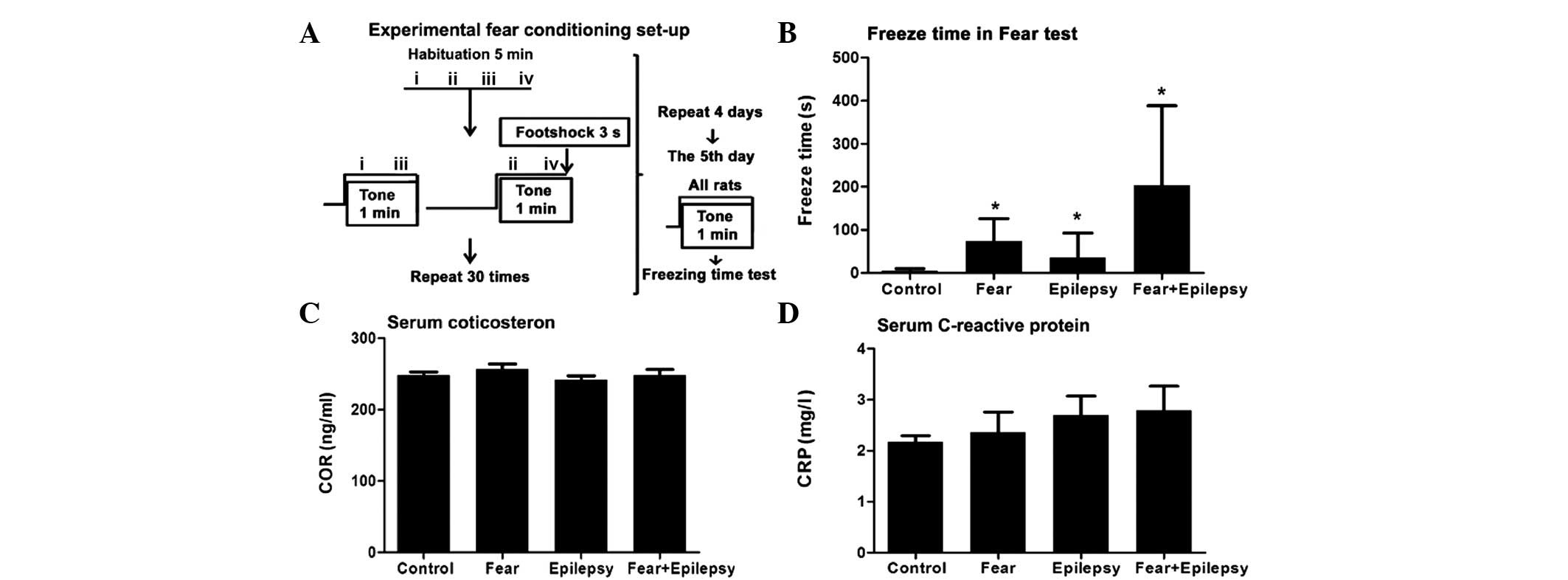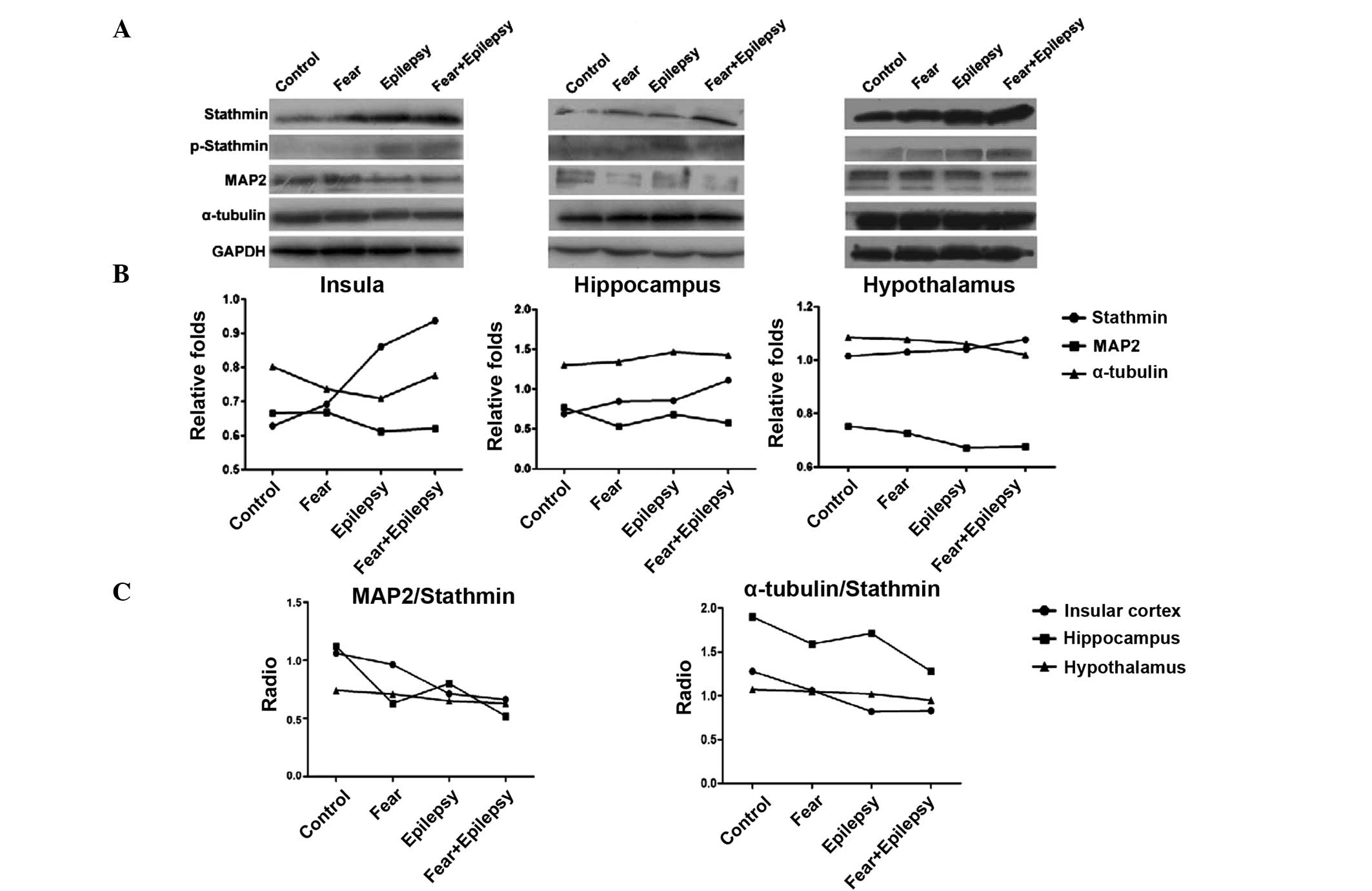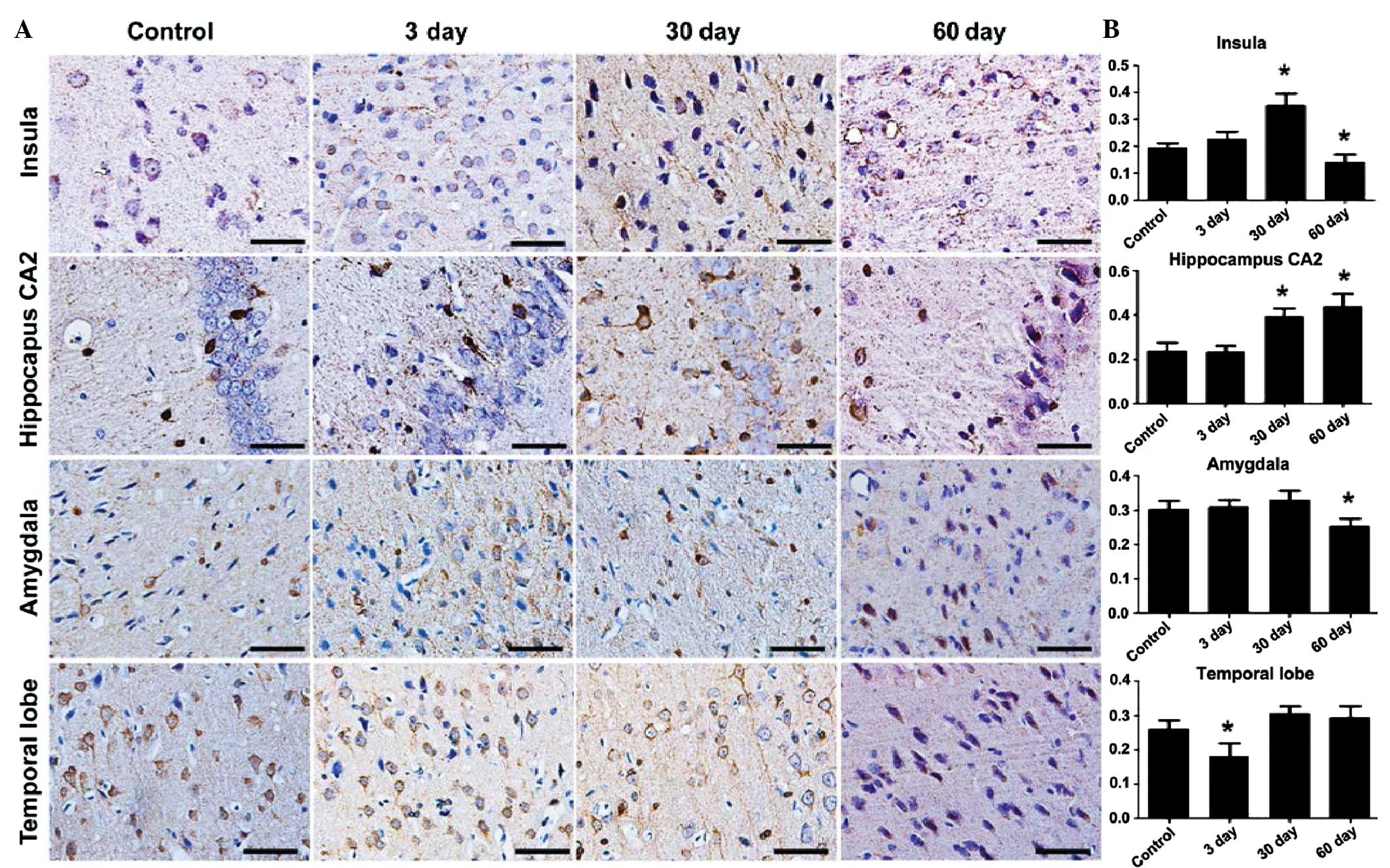Increased stathmin expression strengthens fear conditioning in epileptic rats
- Authors:
- Published online on: November 14, 2014 https://doi.org/10.3892/br.2014.386
- Pages: 28-32
Metrics: Total
Views: 0 (Spandidos Publications: | PMC Statistics: )
Total PDF Downloads: 0 (Spandidos Publications: | PMC Statistics: )
Abstract
Patients with temporal lobe epilepsy have inexplicable fear attack as the aura. However, the underlying neural mechanisms of seizure‑modulated fear are not clarified. Recent studies identified stathmin as one of the key controlling molecules in learning and innate fear. Stathmin binds to tubulin, inhibits microtubule assembly and promotes microtubule catastrophes. Therefore, stathmin is predicted to play a crucial role in the association of epilepsy seizures with fear conditioning. Firstly, a pilocarpine model of epilepsy in rats was established, and subsequently the fear condition training was performed. The epileptic rats with fear conditioning (epilepsy + fear) had a much longer freezing time compared to each single stimulus. The increased freezing levels revealed a significantly strengthened effect of the epileptic seizures on the learned fear of the tone‑shock contextual. Subsequently, the stathmin expression was compared in the hippocampus, the amygdale, the insular cortex and the temporal lobe. The significant change of stathmin expression occurred in the insular and the hippocampus, but not in the amygdale. Stathmin expression and dendritic microtubule stability were compared between fear and epilepsy in rats. Epilepsy was found to strengthen the fear conditioning with increased expression of stathmin and a decrease in microtubule stability. Fear conditioning slightly increased the expression of stathmin, whereas epilepsy with fear conditioning increased it significantly in the hippocampus, insular cortex and hypothalamus. The phosphorylated stathmin slightly increased in the epilepsy with fear conditioning. The increased expression of stathmin was contrary to the decrease of the stathmin microtubule‑associated protein (MAP2) and α‑tubulin in the epileptic rats with fear conditioning in all three areas of the brain. The most significant change of the ratio of MAP2 and α‑tubulin/stathmin occurred in the insular cortex and hippocampus. In conclusion, epilepsy can strengthen the fear conditioning with increased stathmin and decreased microtubule stability, particularly in the insular cortex and hippacampus. Therefore, the insular cortex may play a more important role between fear and epilepsy.












